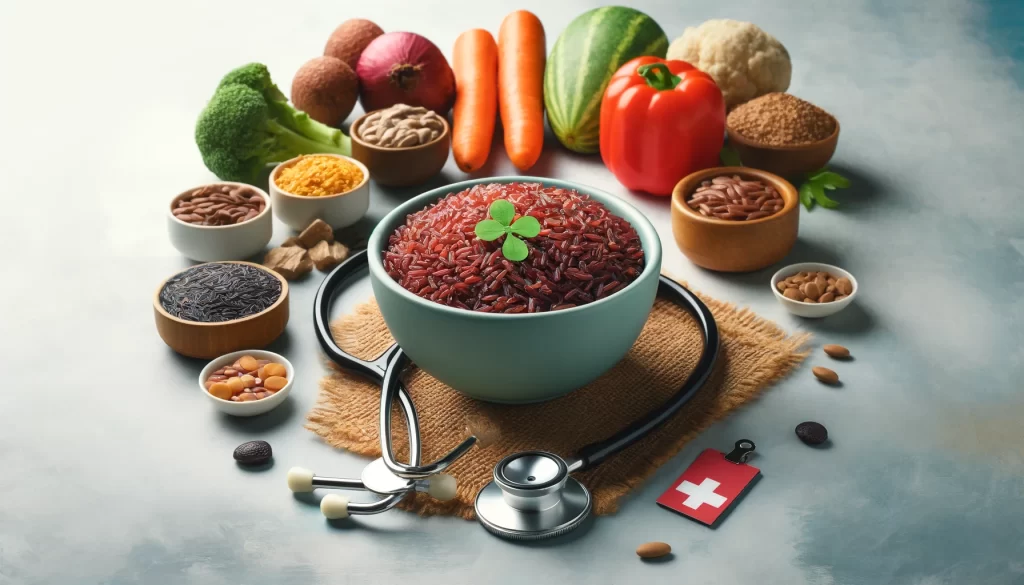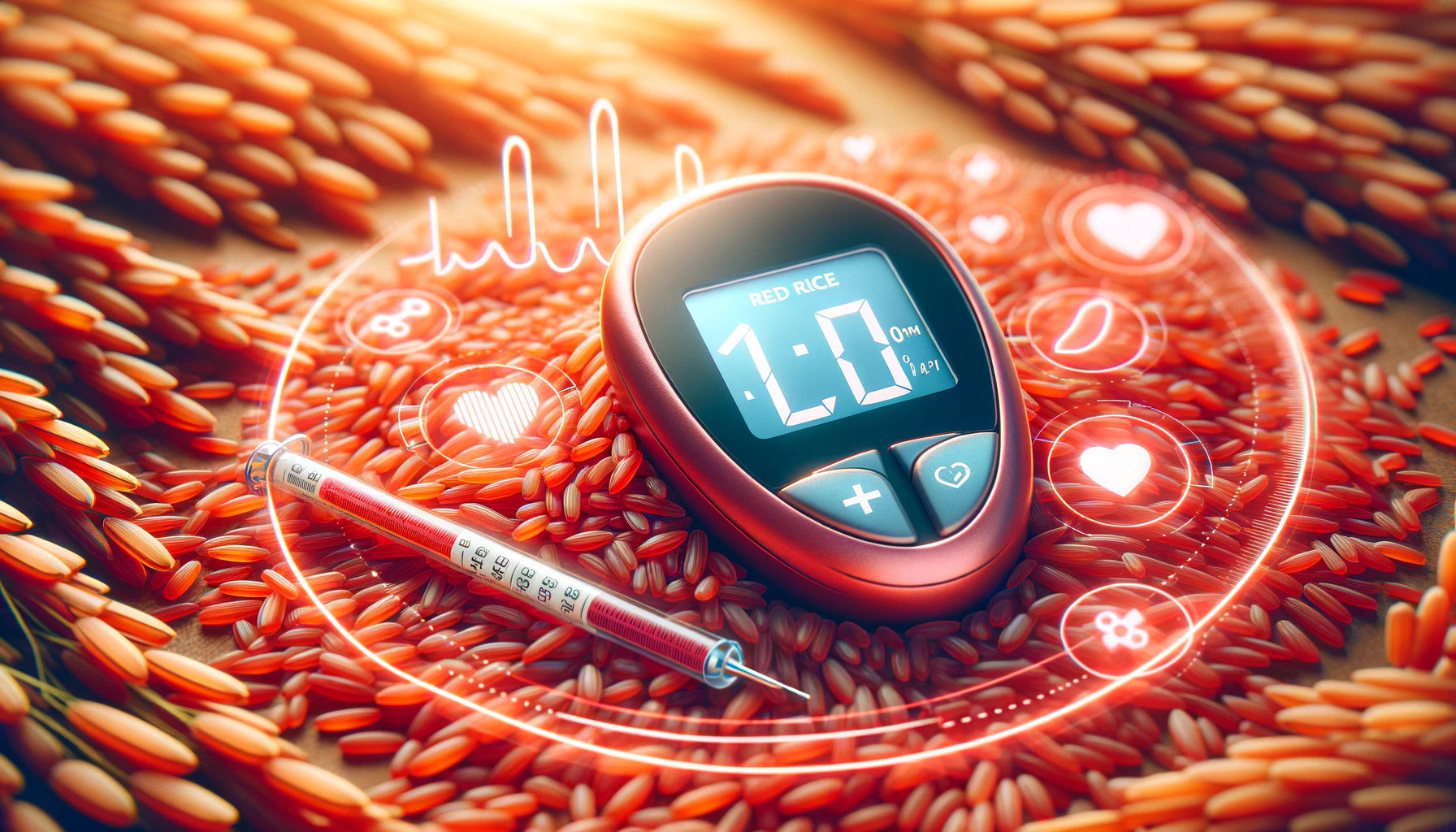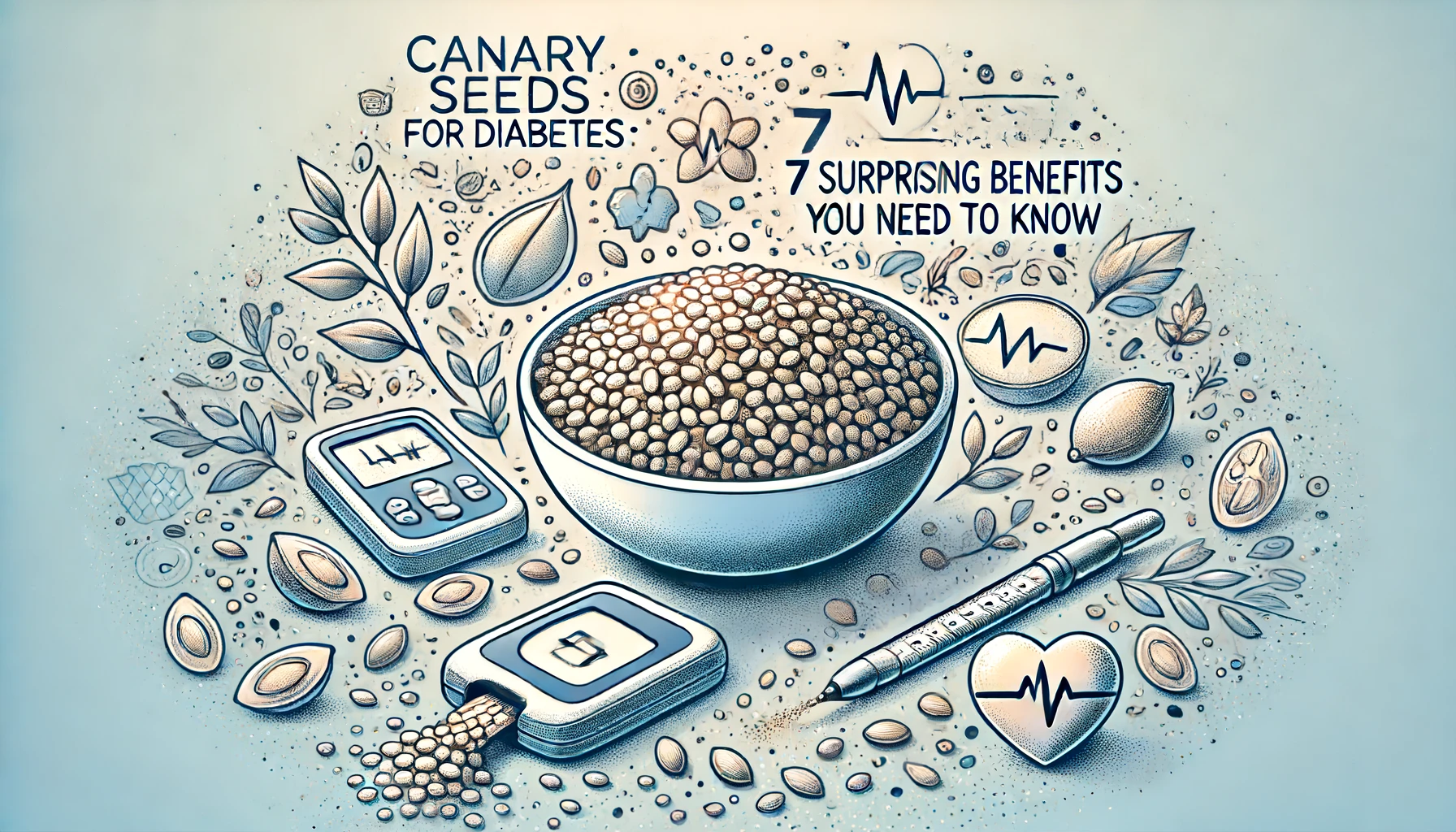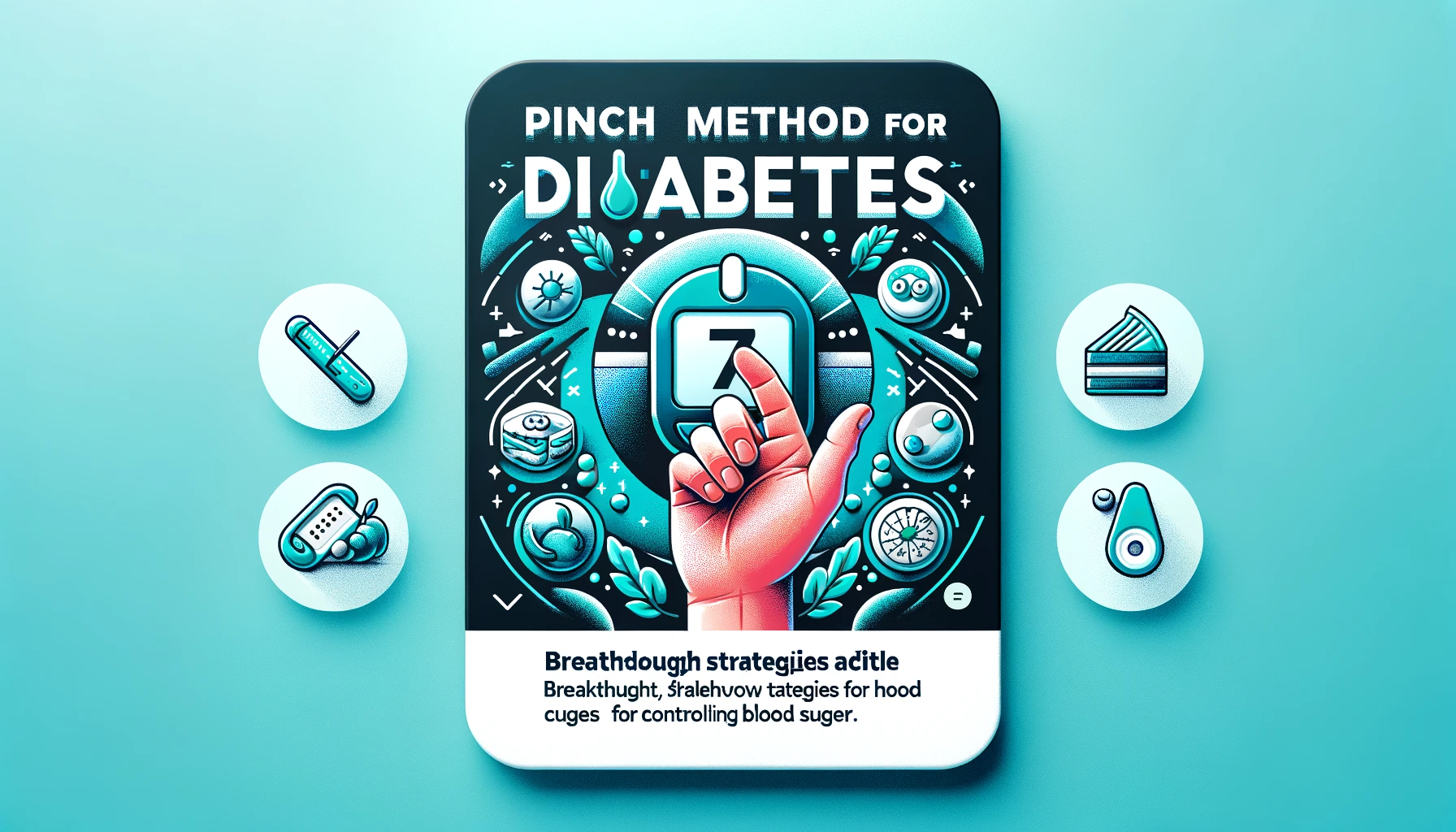Is red rice good for diabetes?
Red rice, a whole grain that is gaining popularity among health-conscious individuals, especially those managing diabetes, presents a compelling case for dietary inclusion.
This introduction sets the stage by explaining what red rice is and discussing its growing relevance in dietary strategies for diabetes management. Understanding the impact of diet on diabetes is crucial, as it directly affects blood sugar levels and overall metabolic health.
Contents
- 1 Section 1: Understanding Red Rice
- 2 Section 2: Red Rice and Blood Sugar Management
- 3 Section 3: Top 3 Proven Benefits of Red Rice for Diabetics
- 4 Section 4: Incorporating Red Rice into a Diabetic Diet
- 5 Conclusion: Is red rice good for diabetes?
- 6 FAQ: Is red rice good for diabetes?
- 7 Diabetes Related Posts
Section 1: Understanding Red Rice
Red rice, often celebrated for its nutritional benefits and distinctive flavor, is more than just an ordinary staple. Unlike the more commonly consumed white and brown rice, red rice boasts a unique reddish-brown hue and a nutty flavor, which make it not only a visually appealing choice but also a healthier one. This section will explore the specifics of red rice, focusing on its nutritional profile and how it compares to other types of rice.
Nutritional Composition
Red rice is a whole grain, which means it retains all parts of the grain kernel — the bran, germ, and endosperm — unlike white rice, which has the bran and germ removed during processing. This difference in processing results in a significantly different nutritional profile between red rice and its white counterpart.
- Calories and Macronutrients: A 100-gram serving of cooked red rice contains approximately 130 calories, 2.5 grams of protein, 28 grams of carbohydrates, and 2 grams of fiber. This makes it a moderately calorie-dense food but a good source of slow-releasing carbohydrates.
- Fiber Content: One of the standout features of red rice is its high fiber content. Fiber is crucial for maintaining good digestive health and plays a role in stabilizing blood sugar levels, which is particularly beneficial for individuals with diabetes.
- Vitamins and Minerals: Red rice is a rich source of B vitamins, particularly B1 (thiamine) and B6, which are essential for energy metabolism and nerve function. It also contains iron, magnesium, and selenium, minerals that are vital for various bodily functions, including immune response and thyroid hormone production.
Antioxidant Properties
Aside from its basic nutritional value, red rice is laden with antioxidants, particularly anthocyanins, which give it its characteristic red hue. These antioxidants are known for their anti-inflammatory properties and their role in combating oxidative stress, a contributor to chronic diseases such as diabetes, heart disease, and cancer.
Glycemic Index
The glycemic index (GI) of red rice is another crucial aspect of its dietary profile. Red rice has a lower GI compared to white rice. This means it causes a slower and smaller rise in blood sugar levels post-consumption, making it a suitable carbohydrate source for individuals managing diabetes.
Comparison with Brown and White Rice
To fully appreciate the benefits of red rice, it’s essential to compare it with other popular types of rice.
- Brown Rice: Similar to red rice, brown rice is a whole grain. Nutritionally, both contain similar amounts of calories, carbohydrates, and fiber. However, the type and concentration of antioxidants differ, with red rice typically having higher anthocyanin content.
- White Rice: The most significant difference between red rice and white rice is in their processing and nutritional content. White rice lacks bran and germ, leading to lower fiber, vitamins, and minerals. It also has a higher glycemic index, which can lead to quicker and higher spikes in blood sugar levels.
Incorporation in Diets
Given its rich nutrient profile, incorporating red rice into the diet can enhance nutritional intake and support health management, particularly for those with chronic conditions like diabetes. It can replace white rice in almost any dish, offering a healthier alternative without compromising taste or satisfaction.
Section 2: Red Rice and Blood Sugar Management

Managing diabetes effectively involves monitoring and controlling blood sugar levels, primarily through diet. Red rice emerges as a beneficial food for diabetics due to its low glycemic index (GI), which measures how much a food raises blood glucose levels after consumption. This section explores how red rice’s GI and its nutritional content contribute to blood sugar management, referencing scientific studies and expert opinions to underscore its potential benefits for those with diabetes.
Understanding the Glycemic Index of Red Rice
The GI of red rice generally falls in the low to medium range, making it a preferable choice for diabetics looking to maintain stable blood sugar levels. Foods with a low GI (55 or less) are digested and absorbed more slowly, which helps prevent rapid spikes in blood glucose and insulin levels, a critical factor in diabetes management.
- Scientific Evidence: Several studies have analyzed the effects of red rice on blood sugar levels. For example, research has shown that replacing white rice with red rice results in lower postprandial (after-meal) blood glucose levels in individuals with type 2 diabetes. These studies highlight the potential of red rice to contribute to more stable glycemic control throughout the day.
Comparative Studies and Blood Sugar Response
- Comparison with Other Grains: Compared to white rice, which has a higher GI and can lead to quick spikes in blood sugar, red rice has a more blunted glycemic response. Studies comparing the GI of red rice to that of white and brown rice have consistently shown that red rice leads to a slower release of glucose into the bloodstream, making it a more suitable option for diabetics.
- Impact on Long-term Diabetes Control: Research also suggests that regular consumption of low-GI foods like red rice may improve overall glycemic control, as reflected in lower HbA1c levels, which is a marker of long-term blood sugar management in diabetics.
Nutritional Components Contributing to Glycemic Control
Apart from its GI, the beneficial effects of red rice on blood sugar levels can also be attributed to its high fiber content. Dietary fiber slows the absorption of sugar, helping to control blood sugar levels more effectively. Additionally, the presence of certain minerals and vitamins in red rice, such as magnesium, which has been linked to improved insulin sensitivity, plays a supportive role in diabetes management.
- Role of Antioxidants: The antioxidants in red rice, including anthocyanins, not only confer its distinctive color but may also have a role in enhancing insulin sensitivity. This can further aid in improving blood glucose control, making red rice an excellent dietary addition for those managing diabetes.
Expert Opinions and Testimonials
Nutritionists and healthcare professionals often advocate for the inclusion of whole grains like red rice in a diabetic diet. Their recommendations are based on both clinical experiences and scientific research that underscores the importance of low-GI foods in managing diabetes.
- Testimonials from Diabetics: Many individuals with diabetes who have incorporated red rice into their diet report better blood sugar control. These anecdotal evidences, while not scientific, provide real-life affirmations of academic research.
- Advice from Dietitians: Dietitians frequently suggest incorporating red rice into meals as part of a balanced diet to help moderate blood sugar levels, reduce the risk of blood sugar spikes, and improve overall dietary quality.
Practical Tips for Incorporating Red Rice
For diabetics interested in integrating red rice into their diet, the following tips can be helpful:
- Portion Control: Even low-GI foods should be consumed in moderation. Portion sizes of about half a cup of cooked red rice are generally recommended for diabetics.
- Balanced Meals: Combine red rice with lean proteins and healthy fats to further stabilize blood sugar levels and provide a balanced meal.
- Cooking Methods: Cook red rice with minimal added fats or sugars. Steaming or boiling are ideal methods that preserve its nutritional value and low GI.
ALSO READ: Sugar Defender Scam – (CAUTION 2024) Fraud Risks to Avoid or Safe Ingredients That Work?
Section 3: Top 3 Proven Benefits of Red Rice for Diabetics
Red rice is more than just an alternative grain choice for those looking to diversify their diet—it’s a strategic food option for managing diabetes. This section highlights the top three benefits of incorporating red rice into a diabetic diet, emphasizing scientific backing and comprehensive analysis of each benefit.
1. Improved Glycemic Control
One of the most significant benefits of red rice is its ability to help stabilize blood glucose levels, a critical factor in diabetes management.
- Low Glycemic Index: Red rice has a lower glycemic index than white rice, which means it causes a slower rise in blood glucose levels after meals. This slower absorption helps prevent sudden spikes in blood sugar, which are detrimental to diabetes management.
- Scientific Evidence: Studies have consistently shown that foods with a low glycemic index can lead to better overall glycemic control in diabetics. Research indicates that substituting high-GI foods with grains like red rice can lead to a significant improvement in the glycemic response. For instance, a study published in the “Journal of Diabetes Research” highlighted that participants who consumed red rice showed a more moderated blood glucose level compared to those who consumed white rice.
- Long-term Benefits: Regular consumption of red rice can contribute to a lower HbA1c, which is an indicator of good blood sugar control over months.
2. Enhanced Nutritional Intake
Red rice’s nutrient profile goes beyond carbohydrates, offering a rich mix of vitamins, minerals, and fibers which play a holistic role in improving health.
- Rich in Fiber: The high fiber content in red rice aids in slow and steady digestion and absorption of carbohydrates, which not only helps in managing blood sugar levels but also supports digestive health. Fiber is also associated with a lower risk of developing type 2 diabetes.
- Antioxidant Properties: Red rice is a good source of antioxidants, such as anthocyanins, which help reduce oxidative stress and inflammation—conditions often elevated in diabetics. These antioxidants can also protect against other chronic conditions like heart disease, which diabetics are at higher risk for.
- Essential Minerals and Vitamins: It contains essential nutrients such as magnesium, which is crucial for insulin action and glucose regulation, and B vitamins, which are vital for energy metabolism.
3. Cardiovascular Health Improvement
Diabetes increases the risk of cardiovascular diseases significantly, making heart health a priority in diabetes management. Red rice contributes positively in this area due to its nutrient composition.
- Low in Fat and Cholesterol-Free: Red rice is naturally low in fat and contains no cholesterol, making it heart-friendly for those managing both diabetes and heart health.
- Presence of Healthy Fats: Unlike white rice, red rice contains healthy fats, which help in lowering bad cholesterol (LDL) levels while maintaining good cholesterol (HDL) levels.
- Supporting Studies: Research has demonstrated that whole grains like red rice can reduce markers of cardiovascular risk. For instance, a study found that regular consumption of whole grains was associated with lower levels of blood cholesterol and triglycerides, which are linked to cardiovascular health.
Extending the Benefits: A Healthier Lifestyle Overall
Incorporating red rice into a diabetic diet does more than just improve glycemic and cardiovascular health; it also sets the stage for a healthier lifestyle overall. These benefits extend to:
- Weight Management: The high fiber content in red rice helps promote feelings of fullness, which can prevent overeating and assist in weight management, a crucial aspect of managing diabetes.
- Reduced Risk of Metabolic Syndrome: By helping manage weight, blood sugar, and cholesterol levels, red rice can also reduce the risk of developing metabolic syndrome, a cluster of conditions that increase the risk for heart disease and other health problems.
Section 4: Incorporating Red Rice into a Diabetic Diet
Integrating red rice into a diabetic diet can be both beneficial and enjoyable, with a few key practices to ensure it enhances your overall dietary management. Here are practical tips for including red rice in your meals effectively:
Portion Control
Maintaining proper portion sizes is crucial for managing blood glucose levels. A serving size of red rice for diabetics should typically be about 1/2 to 3/4 cups of cooked rice. This moderate portion helps control calorie intake and aligns with carbohydrate management goals.
Cooking Methods
To maximize the health benefits of red rice, opt for cooking methods that retain its nutritional integrity:
- Steaming or Boiling: These methods do not require additional fats and maintain the natural nutrients of red rice.
- Avoid Frying: Frying red rice can add unnecessary fats and calories, potentially impacting blood glucose levels.
Complementary Foods
Pairing red rice with the right foods can enhance its benefits.
- Lean Proteins: Include sources like chicken, fish, or legumes to create a balanced meal that helps stabilize blood sugar levels.
- Vegetables: Add a variety of colorful vegetables, which provide fiber, vitamins, and minerals, further aiding in blood sugar management.
- Healthy Fats: Incorporate a small amount of healthy fats, such as olive oil or avocado, into your red rice dishes. These fats can help slow the absorption of glucose into your bloodstream.
Sample Meal Ideas
Creating meals around red rice can be simple and delicious. For instance:
- Red Rice & Vegetable Stir-Fry: Use a variety of vegetables and tofu or shrimp, stir-fried with a small amount of olive oil.
- Red Rice Salad: Mix cooked red rice with chopped vegetables, beans, a sprinkle of nuts, and a dressing made from vinegar and mustard.
By following these guidelines, individuals with diabetes can enjoy the health benefits of red rice while keeping their blood sugar levels in check. The versatility of red rice also ensures it can be easily incorporated into daily meals without compromising taste or variety.
Conclusion: Is red rice good for diabetes?

Is red rice good for diabetes?
To wrap up, the article will summarize the discussed points, reinforcing the beneficial properties of red rice for those managing diabetes. The conclusion will encourage readers to consider red rice as a part of their dietary plan, emphasizing its role in a balanced and healthy diet.
This structured approach will ensure that the article not only informs but also engages the reader, providing valuable insights and practical advice on managing diabetes with red rice. Each section will transition smoothly to the next, maintaining a cohesive narrative throughout the article.
ALSO READ: Sugar Defender Reviews – [UPDATED 2024] Does It Really Work?
FAQ: Is red rice good for diabetes?
-
What exactly is red rice?
Red rice is a variety of rice that has a reddish husk. It is a whole grain, which means it contains the bran, germ, and endosperm, making it richer in nutrients compared to white rice, which has the bran and germ removed.
-
How does red rice help in managing diabetes?
Red rice helps manage diabetes primarily through its lower glycemic index, which means it causes a slower increase in blood glucose levels. It’s also high in dietary fiber, which helps in controlling blood sugar spikes.
-
Can eating red rice improve my overall health?
Yes, beyond helping to manage blood sugar levels, red rice is beneficial for overall health. It is rich in antioxidants, which protect against cellular damage, and its high fiber content promotes digestive health and can aid in weight management.
-
Is red rice better than brown rice for diabetes?
Red rice and brown rice both have similar nutritional profiles and low glycemic indices compared to white rice. Choosing between them can depend on personal preference for taste and texture. Both are excellent choices for a diabetes-friendly diet.
-
How often can I eat red rice if I have diabetes?
Red rice can be a part of your regular diet, but like all foods, it should be consumed in moderation. The exact amount can vary based on individual dietary needs, so it’s best to consult with a healthcare provider or dietitian.
-
Are there any risks associated with eating red rice?
For most people, red rice is safe to eat and poses no serious risks. However, because it is high in fiber, introducing it suddenly and in large amounts can lead to digestive upset. Start with small portions and gradually increase your intake.
-
Where can I buy red rice?
Red rice is available in health food stores, specialty Asian markets, and online. It might also be found in the international or whole grains section of larger supermarkets.
-
How should I cook red rice for the best health benefits?
To retain the most nutrients, cook red rice with minimal processing. Simply boil it in water, much like you would with other types of rice, and avoid adding excessive fats or sugars.
-
Can I replace all the rice in my diet with red rice?
While you can replace white rice with red rice, it’s important to maintain a balanced diet that includes a variety of grains. This ensures you get all the necessary nutrients from different sources.
-
What other foods should I include in my diet to help manage diabetes?














